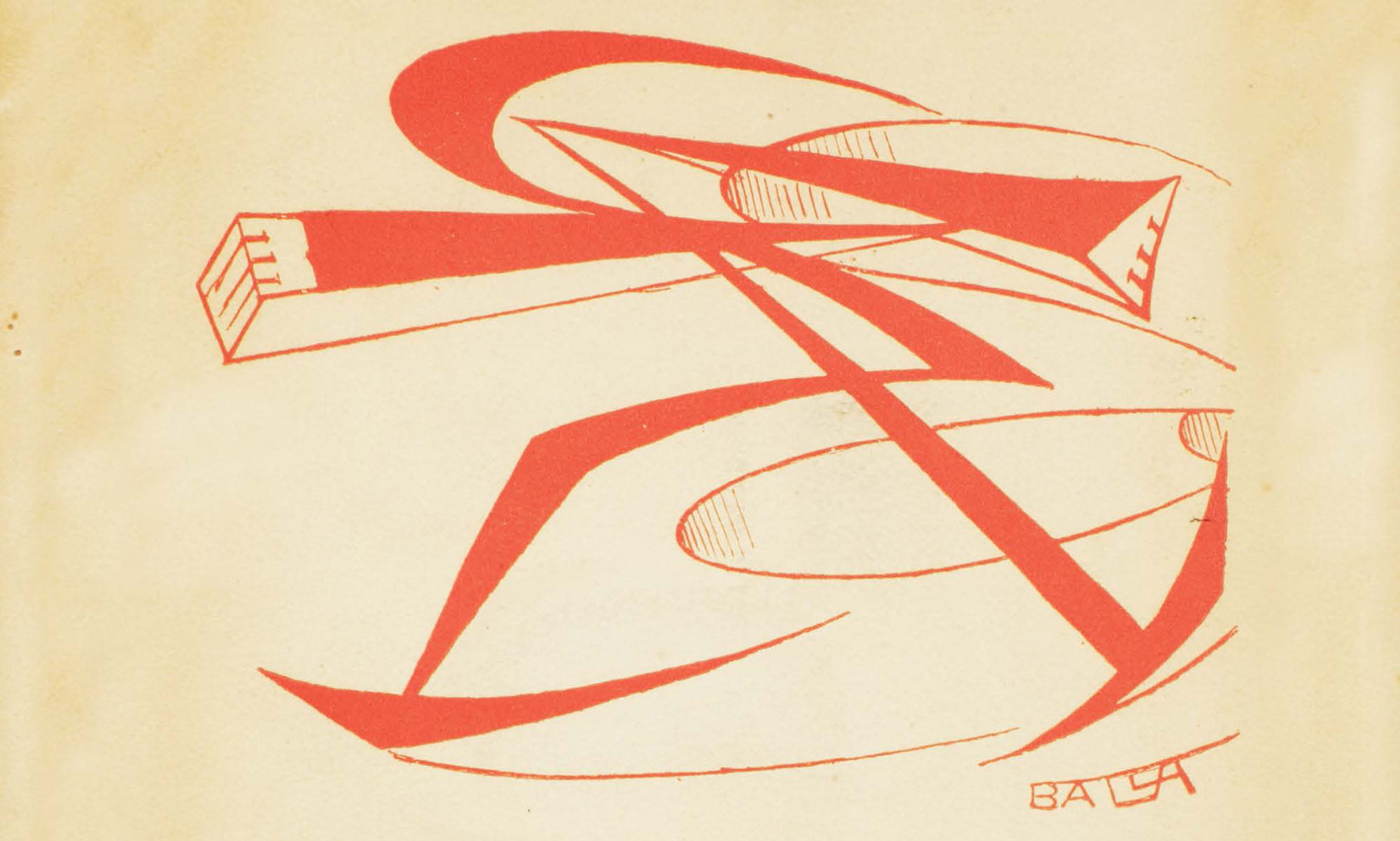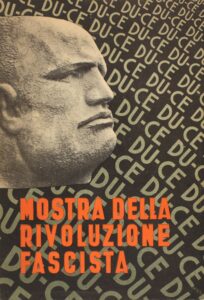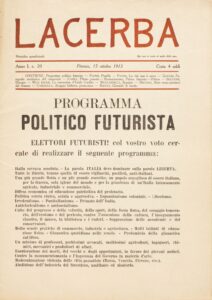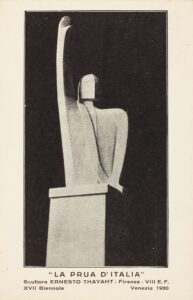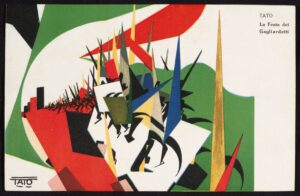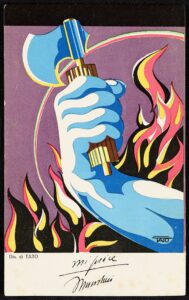Section curated by by Sebastien François, Anthony Grande, Melanie Miranda, Claudia Perez, and John Silvers
Futurism and politics were joined together from the founding of the movement in 1909: the futurists were ardent nationalists who supported Italy’s entry into World War I. Shortly after the end of the global conflict, the Kingdom of Italy experienced a totalitarian government that lasted twenty years: Fascism. Founded by Benito Mussolini in the late 1910s, the Fascist Party took power in 1922 and quickly turned the country’s government into a totalitarian regime.
Mussolini, the leader of Fascism, and Filippo Tommaso Marinetti, the leader of futurism, were longtime acquaintances, and their two respective movements shared many ideas and goals. Both futurism and Fascism favored nationalism, and revolutionary nationalism in particular. Both embraced power and violence. Both wished for Italy to become a modern, industrial nation. These similarities led to an alignment between the two movements.
The toxic political atmosphere of interwar Italy had a significant impact on futurism. Countless futurist works of art during the Fascist regime depicted Mussolini as a powerful leader who would help Italy prosper through his leadership and totalitarian rule. Futurist art intended to inspire nationalist feelings among Italians by promoting ideas of national unity, strength, and militarism, and by displaying Fascist symbols. Futurism gave Fascist propaganda a veneer of artistic legitimacy while Fascism gave futurists official recognition and funding. However problematic, this alliance between artists and politicians helped further each group’s respective goals.
